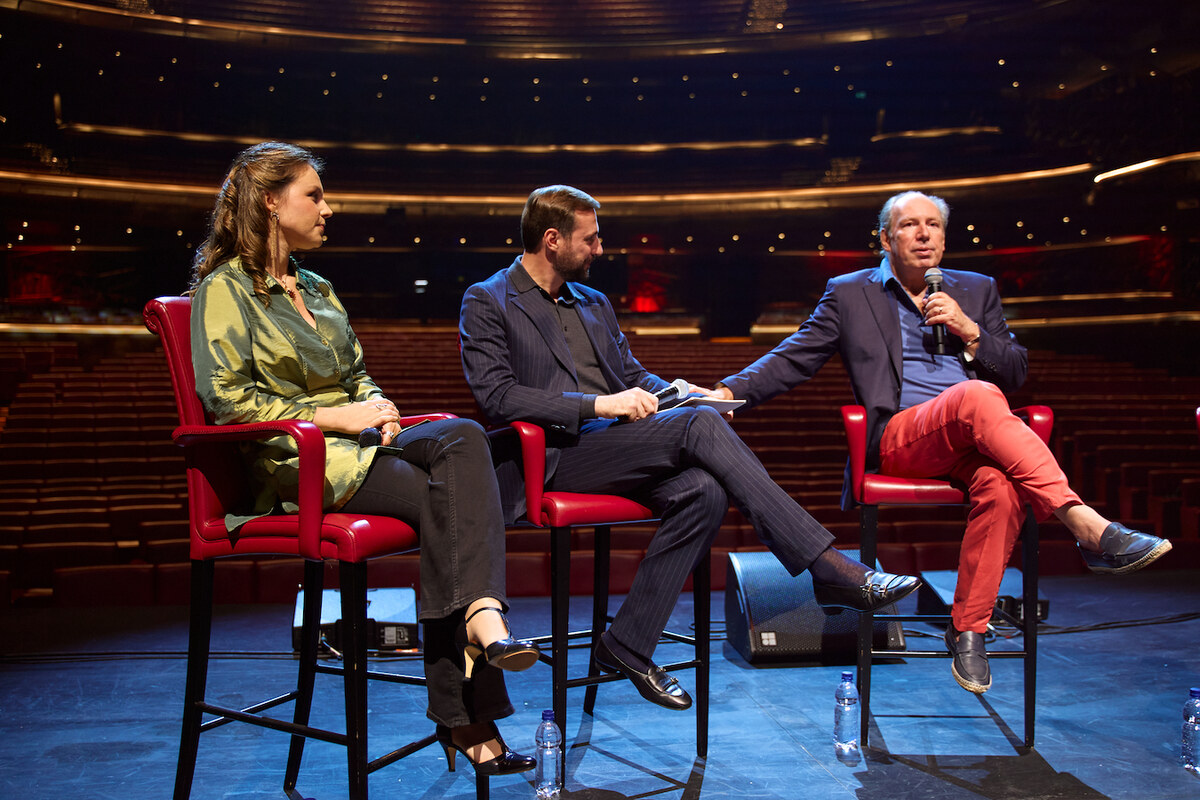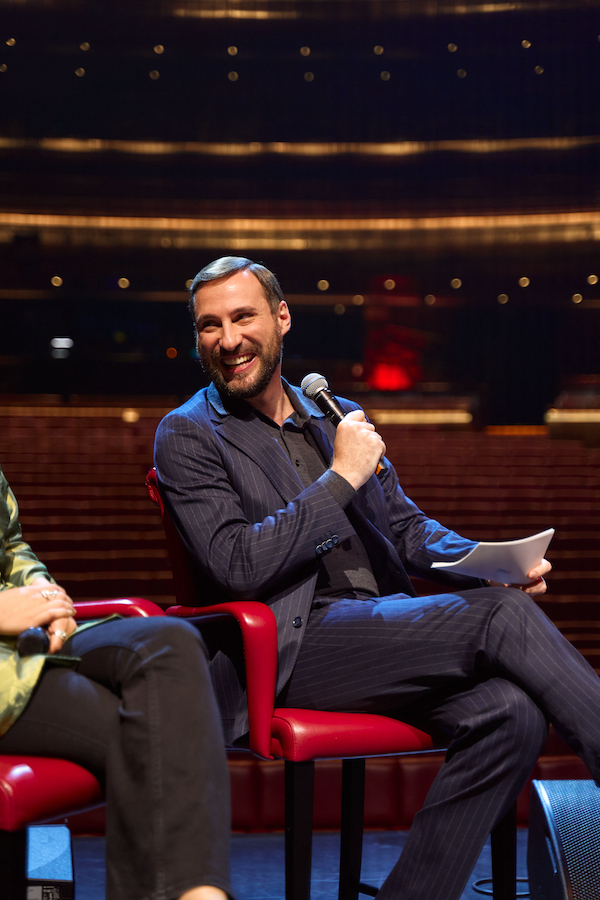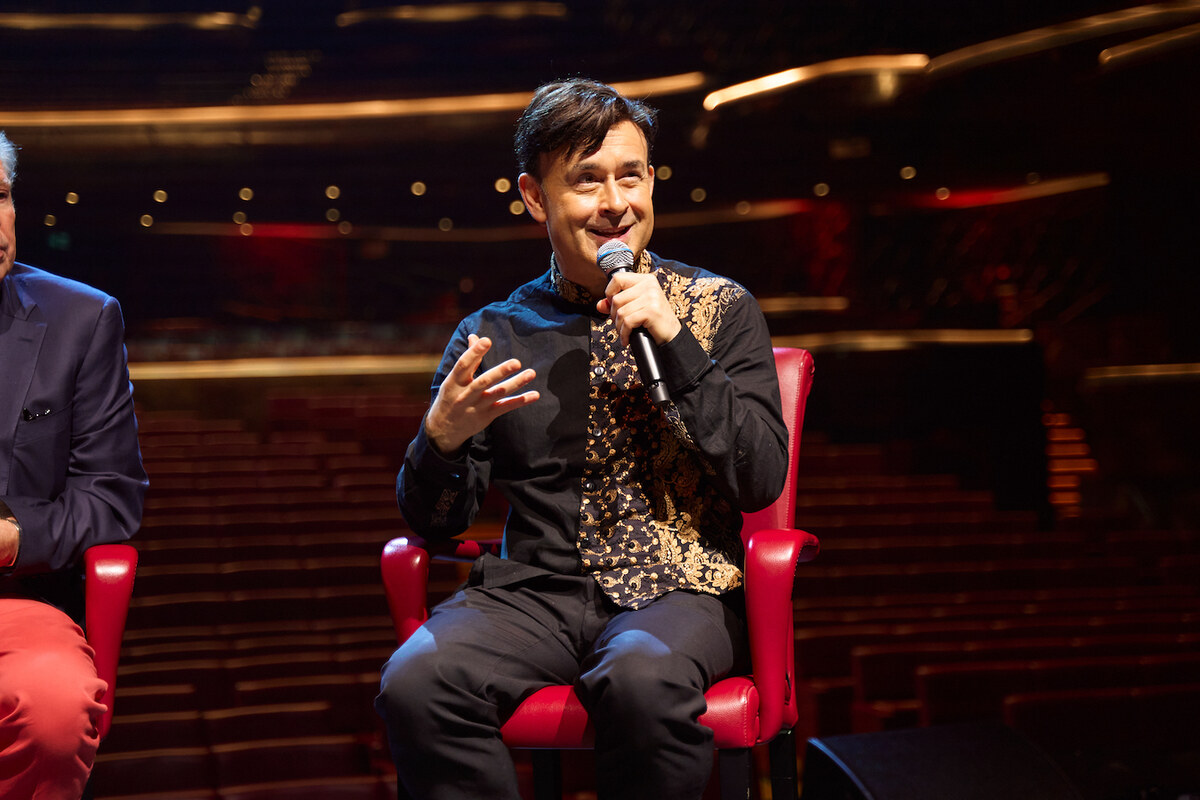Donald Sutherland, one of Canada’s most versatile and gifted actors, who charmed and enthralled audiences in movies such as “M*A*S*H,” “Klute,” “Ordinary People” and “The Hunger Games,” has died at the age of 88.
The actor, whose lengthy career spanned from the 1960s into the 2020s, died on Thursday, his son, actor Kiefer Sutherland, said on social media.
A tall man with a deep voice, piercing blue eyes and a mischievous smile, Donald Sutherland switched effortlessly from character roles to romantic leads opposite the likes of Jane Fonda and Julie Christie. He also played his share of oddballs and villains.
One of the biggest stars in Hollywood in the 1970s, he remained in demand for film and TV projects into his 80s. Known for his unconventional looks and his versatility as an actor, Sutherland played a wide range of memorable characters.
These included a rascally Army surgeon in “M*A*S*H” (1970), a quirky tank commander in “Kelly’s Heroes” (1970), a small-town detective in “Klute” (1971), a stoned and libidinous professor in “Animal House” (1978), a local official facing an alien presence in “Invasion of the Body Snatchers” (1978) and a despairing father in “Ordinary People” (1980). He won a new generation of fans with his glorious portrayal of a despotic president in “The Hunger Games” (2012) and its sequels.
“I wish I could say thank you to all of the characters that I’ve played, thank them for using their lives to inform my life,” Sutherland said in his speech accepting an honorary Academy Award for lifetime achievement in 2017.
Kiefer Sutherland said his father was “never daunted by a role, good, bad or ugly.”
“He loved what he did and did what he loved, and one can never ask for more than that. A life well lived,” Kiefer Sutherland wrote on X.
Donald Sutherland was born on July 17, 1935, in Canada’s New Brunswick province, and was raised in Nova Scotia. He performed in school productions in college, moved to Britain to hone his craft, then moved to the United States, where his first big break came as a member of a top-notch ensemble cast in the war film “The Dirty Dozen” (1967).
He rocketed to fame three years later playing nonconformist surgeon Hawkeye Pierce in director Robert Altman’s Korean War satire “M*A*S*H” (1970). The film — later spun off into a TV series — depicted hijinks at a Mobile Army Surgical Hospital, tapping into the anti-war sentiment among many Americans during the Vietnam War era.
Also in 1970, Sutherland starred alongside Telly Savalas and Clint Eastwood in “Kelly’s Heroes” as Sergeant Oddball on a mission to steal gold from the Nazis.
The following year, he was paired with Fonda, one of Hollywood’s luminaries, in “Klute,” and then in 1973 played a grieving father in “Don’t Look Now” that included a sizzling sex scene with Christie. “Klute” sparked a romance with Fonda, with whom he was active in the anti-Vietnam War movement.
His 1978 films could not have been more different. In the uproarious comedy “Animal House,” Sutherland played a professor who sleeps with the girlfriend of a fraternity member. “Invasion of the Body Snatchers” was a successful sci-fi remake of a classic 1956 original, telling the story of alien pods that take over human beings.
Sutherland’s performance in “Ordinary People,” Hollywood superstar Robert Redford’s directorial debut, helped the 1980 film win four Academy Awards, including best picture. Sutherland starred alongside Mary Tyler Moore and Timothy Hutton in this exploration of the splintering of a Midwestern family.
In the 1990s he appeared in films including “JFK” (1991), “Backdraft” (1991), “Buffy the Vampire Slayer” (1992), “Outbreak” (1995), “A Time To Kill” (1996) and “Instinct” (1999) and won an Emmy Award for his performance in the 1995 HBO TV movie “Citizen X.” In the 2000s, he appeared in the acclaimed “Cold Mountain” (2003) and “Pride & Prejudice” (2005).
In the “Hunger Games” films in the 2010s about a dystopian future in which teenagers are sent into a deadly competition as mass entertainment, he reveled in playing the villainous President Coriolanus Snow.
“The reality was he had a country to run. At least he was running it, which is more than you can say for some people,” Sutherland told the Los Angeles Times in 2017.
“It was funny at the beginning with ‘The Hunger Games’ to walk through an airport and suddenly you feel this tug and you look down and it’s some young person — always a girl, never a boy,” Sutherland said. “And her mother is standing there and they say, ‘Could you take a photograph with my daughter?’ And we’d be standing beside each other and I’d be looking at the camera and the girl would say, ‘Could you look mean?’“
Tributes to Sutherland came in across Hollywood and Canada on Thursday.
Ron Howard, who directed Sutherland in “Backdraft,” called him “one of the most intelligent, interesting and engrossing film actors of all time.”
Sutherland had “incredible range, creative courage & dedication to serving the story & the audience with supreme excellence,” Howard wrote on X.
Canadian Prime Minister Justin Trudeau, speaking to reporters in Nova Scotia, said Sutherland “was a man with a strong presence, a brilliance in his craft and truly, truly a great Canadian artist.”
Sutherland was considered among the best actors to never receive an Academy Award nomination for any of his roles. He was married three times and had five children, including Kiefer.
Donald Sutherland, star of ‘M*A*S*H’ and ‘The Hunger Games’, dead at 88
https://arab.news/rnm8h
Donald Sutherland, star of ‘M*A*S*H’ and ‘The Hunger Games’, dead at 88

- Known for his unconventional looks and his versatility as an actor, Sutherland played a wide range of memorable characters
- Ron Howard, who directed Sutherland in ‘Backdraft,’ called him ‘one of the most intelligent, interesting and engrossing film actors of all time’
Limitless Orchestra marks world premiere at Dubai Opera with show honoring Johann Strauss, Hans Zimmer

DUBAI: Dubai Opera played host to a world premiere this week that reimagines orchestral music for a new generation of music lovers.
“Global Waltzing — from Johann Strauss to Hans Zimmer,” presented by The Limitless Orchestra, took place at the intimate venue at the heart of Dubai on Jan. 10 and 11.
The brainchild of Russian-German violinist and composer Aleksey Igudesman, the orchestra enjoys the distinguished patronage of legendary film composer Hans Zimmer, who also made a special guest appearance on stage on both nights.

Under Igudesman’s innovative “fail forward” approach, “The Limitless Orchestra” breathes new life into the traditional boundaries of symphonic artistry, blending timeless musical techniques with contemporary creativity to deliver an experience that is as daring as it is transformative.
“The world definitely does not need another orchestra, for sure, but I think the world needs this orchestra and other orchestras like it,” Igudesman said ahead of the show.
“The orchestra essentially has not changed, or an orchestra has not changed its format more or less for 150 years. It has become an institution, a very vital cultural institution. But everything that stays the same becomes stagnant and becomes a museum, and then dies eventually, and we do not want an orchestra to die. So, for me, I think launching the ‘Limitless’ orchestra with the help of my great friends is something that I just had to do, because I did not want to have the things that I love so much die, and I wanted to show a possible new way of doing things.”

The show sees the orchestra revitalize the timeless works of Johann Strauss, skillfully blending the cherished compositions of the Austrian king of the waltz with the epic film music of Hollywood legend Zimmer.
Zimmer, displaying his trademark humility, said: “I don’t think there are limitations to classical music. I would hate to go about ruining Bach or Mozart. That’s their music and we can have new music.
“I’m just a peasant of music. I write film music. But the weird thing is that every day I get to go out and hire an orchestra. I get to go out and play in arenas for 20,000 people. So, something is working with what I’m doing. I’m adding instruments to the orchestra, I’m adding playfulness.”

The program will showcase a dazzling fusion of classical and cinematic music through an innovative selection of compositions, including the opening piece, “Emperor Waltz, Sultan Style,” by Igudesman and Tristan Schulze, inspired by Johann Strauss.
Other pieces include “Sherlock Holmes Fantasy,” “From Time to Time — Inception Waltz,” and “The Banker’s Waltz.”
Igudesman, celebrated for his electrifying performances and whimsical approach to classical music, will perform original works and innovative compositions, accompanied by the mesmerizing voice of soprano Ekaterina Shelehova.
Saudi-backed film to screen at International Film Festival Rotterdam

DUBAI: The International Film Festival Rotterdam this week revealed its line-up for the 2025 edition, featuring the Red Sea Film Foundation-supported “Dead Dog” by Lebanese director Sarah Francis.
The film follows Walid and Aida, a husband and wife reunited after his long absence abroad. As they confront the emotional distance between them, secrets come to light, including Aida’s silence about their beloved dog Punto. Set against a backdrop of shifting dynamics and unspoken truths, “Dead Dog” explores themes of estrangement, trust, and the complexities of marriage.
The festival is set to take place from Jan. 30 to Feb. 9.
Netflix unveils season 2 trailer for ‘Mo’

DUBAI: Netflix this week released the trailer for the highly anticipated second season of Palestinian-American comedian Mohammed Amer’s award-winning series “Mo,” announcing its debut on Jan. 30.
The new trailer showcases the show’s signature humor and heartfelt moments as Mo Najjar, played by Amer, continues to navigate life as a Palestinian refugee in the US.
In season 2, he finds himself stuck on the other side of the border, desperately trying to make it back to Houston in time for his family’s important asylum hearing. With no passport and few options, he faces a series of unexpected challenges, including a new rival who jeopardizes his relationship with Maria and his signature falafel taco recipe.
Coldplay lights up chilly Abu Dhabi with visual and auditory spectacle

- Band began 4-day UAE concert series on Thursday
- Show is part of their Music of the Spheres World Tour
DUBAI: Grammy Award-winning band Coldplay lit up a chilly Abu Dhabi with a visual and auditory spectacle on Thursday at Zayed Sports City Stadium, for the first of their four-day concert series that is a part of their Music of the Spheres World Tour.
The setlist featured crowd favorites including “All the Love,” “Yellow,” “Hymn for the Weekend,” “Paradise,” “The Scientist,” “Clocks,” and “A Sky Full of Stars.”
Adoring fans wore glowing wristbands that pulsed in sync with the music. There were bursts of confetti, large illuminated planets suspended throughout the stadium, and balloons floating across the crowd.
Coldplay engaged with the audience, including having a couple reveal their baby’s gender, drawing cheers from the crowd.
Frontman Chris Martin charmed the audience further by speaking in Arabic. “Assalamu alaikum, wa masa’ al khair. Shukran jazeelan,” he said, translating to “Peace to you, and good evening. Thank you very much.”
Before Coldplay’s set, Chilean-Palestinian singer Elyanna warmed up the crowd with a captivating performance, singing hits including “Ganeni” and “Mama Eh.”
Later, she joined Coldplay on stage to perform their collaborative track, “We Pray.”
The concert ended with a breathtaking fireworks display.
Coldplay will perform in the UAE capital on Jan. 11, 12 and 14.
Highlights from the traveling ‘Art of the Kingdom’ exhibition

- The show, which is on display in Rio de Janeiro until Jan. 12, features work by 17 contemporary Saudi-based artists
RIYADH: “Art of the Kingdom” is perhaps the most significant exhibition so far for Saudi contemporary artists. It has already been on show in Brazil’s capital city for three months, and will soon move to Riyadh, before heading to China.
It features works by 17 Saudi, or Saudi-based, artists — Ayman Yossri Daydban, Ahmed Mater, Emy Kat (Mohamed Alkhatib), Ayman Zedani, Shadia Alem, Nasser Al-Salem, Manal AlDowayan, Lina Gazzaz, Muhannad Shono, Sarah Brahim, Daniah Alsaleh, Faisal Samra, Filwa Nazer, Moath Alofi, Ahaad Alamoudi, Sarah Abuabdallah, and Ghada Al-Hassan — and, as the press release states, “offers a unique opportunity to explore the ways in which Saudi contemporary art contributes to shaping new cultural narratives.”
The press release also states: “Two main themes emerge from the exhibition … The first is the desert as a definition of space, infinity, and life; the second is the singularity of cultural tradition, and the evolution of a unique visual culture, shaped by diverse pasts and presents.”
Here are just a few of the artworks that make up the exhibition, the theme of which is “Poetic Illuminations.”
Nasser Al-Salem
‘Arabi/Gharbi’
The Makkah-born artist’s work, according to the exhibition brochure, “challenges the traditional boundaries of Islamic calligraphy by re-contextualizing it through mixed media, minimalist approaches, and architectural methods.” This piece, the title of which translates to ‘Arab/Foreigner’ is made up of neon lighting that presents both words simultaneously: a single illuminated (or not illuminated) dot allows it to switch between the two — when lit, it says ‘Gharbi,’ when unlit it reads “Arabi” — thus highlighting the minor differences that help form our images or ourselves. It is used as both the first and last piece in the exhibition, because, according to curator Diana Wechsler, “it installs a border between the contemporary Saudi world and the cultural horizon of the public. The journey through the exhibition shows, piece by piece … different aspects of this fascinating culture in which past and present, traditions and changes are involved. Arriving at the end of this journey and finding again the twinkling neon of Nasser Al-Salem, I like to imagine that the public will see it differently; that the experience of the journey has been able to broaden their horizons.”

Ahmed Mater
‘X-Ray Illumination Diptych 1’
Mater is one of the most internationally famous Saudi contemporary artists — last summer he was the subject of a mid-career retrospective at Christie’s in London. This work comes from his “Illuminations” series, which, according to the artist’s website, blends “the past, represented by traditional Islamic arts, with the present, through the innovations of modern medicine.”
It continues: “Faith and science are brought together — two subjects that are often treated as essentially separate and full of tense contradictions.” It is perhaps no surprise that the work of Mater — a doctor and an artist — should tackle these contradictions.
In a brief essay about the series, Linda Komaroff, of the Los Angeles County Museum of Art, writes: “What could be more intimate than literally to see inside another individual? This is most eloquently expressed in (Mater’s) great diptychs in which a traditional type of richly illuminated double page composition frames two X-rays set face to face; the skeletal images suggest some elemental form of humanity, stripped of the skin, hair, eyes and clothes that differentiate as well as separate us.”

Sarah Brahim
‘Soft Machines/Far Away Engines’
This work by visual and performance artist Sarah Brahim was originally commissioned for the first Diriyah Contemporary Biennale in 2021. The screens show individuals moving and embracing. Small gestures, Brahim told Arab News in July 2022, are “amplified through repetition and layering, conjuring up multifaceted images of beauty.” Her work in general, according to the show brochure, “is a response to and reflection on how we can heal both internally and externally, and how art and culture can serve as a vehicle for this movement.”

Ayman Zedani
‘The Return of the Old Ones’
“The construction and consumption of nature in the Gulf are central” to Zedani’s “exploration process,” the show brochure states. “His projects serve as platforms inviting the public to observe the symbiosis between human and non-human elements.” This experimental film offers “a poetic perspective from a non-human entity,” according to the artist’s website, “weaving factual information with a science fiction narrative to explore the story of oil through the life, death, and resurrection of ancient giant fungi known as Prototaxites,” remnants of which “have only been found in a few places in the world, including Saudi Arabia and the US.” The story, “reminds us that fossil fuels comes from ancient life forms that have been crushed down into raw black energy.”

Shadia Alem
‘Negatives, no more’
Alem’s installation consists of thousands of photo negatives hand-stitched together and covering 20 years of her and her sister’s life from 1985-2005, as well as larger DVD images. It symbolizes the difficulty of being both an artist and a woman in the Kingdom at that time. “In the world’s conscience, we remained indifferently invisible and when accidentally subjected to the media’s light, we were outlined as passive, veiled/ negatives without prints,” Alem writes on her website. “Nonetheless, we were there all along, actively creating, struggling, weaving our lives … Nowadays, we reached a point in our history where all is changed … we rode the tide casting away the darkness overshadowing our identities.”













